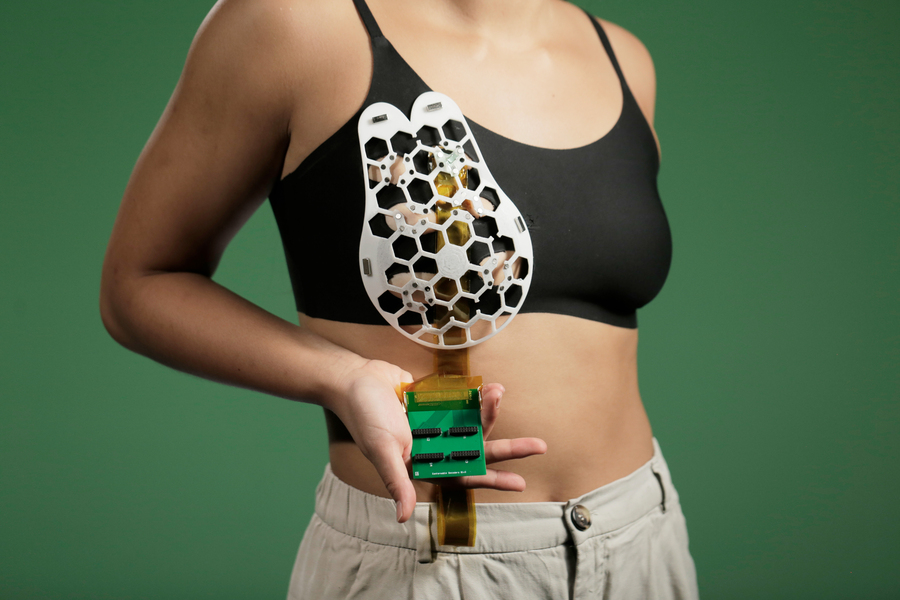Scientists from the Massachusetts Institute of Technology (MIT) have developed a wearable ultrasound “bra” as a breast cancer monitor that can be used from the comfort of your home. By detecting breast tumors earlier — especially in individuals at high risk of developing breast cancer — this device will improve survival.
The importance of early detection of breast cancer
About 12.5% of women in the U.S. (or 1 in 8) will be diagnosed with breast cancer. You or someone you know has likely been personally affected. Early detection is critical, so the cancer is found while it’s localized and has not spread beyond the breast. When breast cancer is found early, the 5-year survival rate is 99%. But this survival rate drops to 30% for cancer that has spread to more distant areas of the body.
Public education and advances in early detection and treatment have increased breast cancer survival rates in many countries. According to the Breast Cancer Foundation, 64% of breast cancers are detected early in women from the United States. Breast cancer incidence is high but mortality is low in western Europe and North America. The opposite is found in economically developing countries such as African, Asian and Central American countries, that have low breast cancer incidence rates with high mortality rates. This is due to the lack of early diagnosis and early treatment for many women living in these regions. Early diagnosis enables treatment to begin sooner and reduces mortality rates.
New breast cancer monitor inspired by personal experience
The team at MIT — led by Dr. Canan Dagdeviren — designed the wearable ultrasound bra to allow the detection of breast tumors when they’re still in early stages. Dr. Dagdeviren was inspired to create the new breast cancer monitor by the experience of her late aunt. Tragically, despite having regular cancer screenings, her aunt was diagnosed with late-stage breast cancer at age 49 and passed away six months later. At her aunt’s bedside, Dagdeviren drew a rough schematic of the diagnostic device that she later developed into the wearable ultrasound bra. She and colleagues published results from the evaluation of the new breast cancer detection method (called a conformable ultrasound breast patch) in Science Advances.

Dr. Canan Dagdeviren
The new device could be valuable for patients at high risk of developing breast cancer in between routine mammograms. Some risk factors for breast cancer include being older, having a genetic predisposition or family history of breast cancer, having dense breasts, or having had cancer previously (see BreastCancer.org for more information).
New technology makes the “Conformable ultrasound breast patch” possible
If you have ever had an ultrasound scan at a physician’s office, you might remember that it involves a rather bulky device. What makes the wearable breast cancer monitor unique is the miniaturization of the techology. The researchers created a miniaturized ultrasound scanner that allows the user to perform imaging at any time. According the MIT, a patch is attached to a bra using magnets. The ultrasound scanner fits the patch through openings to allow the scanner to contact the skin. The ultrasound scanner can be moved to six different positions, allowing the entire breast to be imaged. The scanner can also be rotated to take images from different angles, and does not require any special expertise to operate. The scientists are now working on a miniaturized imaging system to view the ultrasound scans. Check out this video for more of the fascinating details.
With new technologies like those being developed at MIT, the future for breast cancer detection and early treatment look bright. You can also learn about breast cancer prevention and noninvasive methods to address ductal carcinoma in situ (DCIS) here.



